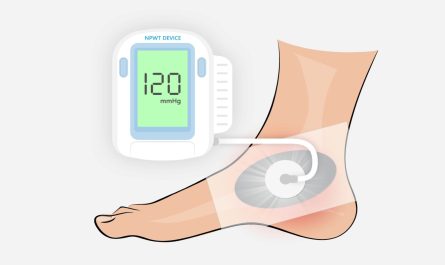What is Interstitial Lung Disease?
Interstitial lung disease (ILD) refers to a large group of diseases that inflame or scar the lungs. ILDs are classified as diffuse parenchymal lung diseases, which directly affect the tissue and spaces within the lungs. Specifically, ILDs affect the interstitium – the tissue and space around the air sacs (alveoli) in the lungs. The interstitium provides structure to the lungs and plays a key role in gas exchange.
The Symptoms of ILD
The symptoms of ILD can vary greatly depending on the cause and severity of lung scarring. Common symptoms include:
– Shortness of breath – Most ILD patients experience shortness of breath during exertion, which worsens over time and may lead to shortness of breath even at rest.
– Dry cough –Interstitial Lung Diseases A non-productive (dry) cough is very common in ILD and often persists for months.
– Fatigue – Feeling tired or lacking energy is a major complaint for many ILD patients. Fatigue can significantly limit daily activities.
– Weight loss – ILD patients may lose their appetite or have difficulty gaining weight due to their decreased lung function. Unexplained weight loss should raise concern for ILD.
– Finger clubbing – An abnormal enlargement and rounding of the finger ends is common in more severe ILD due to long-term hypoxemia, or low oxygen levels.
– Joint/muscle aches – Some patients experience aches and pain in joints and muscles of the hands, fingers, feet and toes. This likely relates to systemic inflammation from active lung disease.
Causes and Risk Factors for ILD
There are over 200 identified causes of ILD, but the exact cause is often unclear. Many ILDs appear related to genetic mutations or immune system abnormalities. Common causes and risk factors include:
– Connective tissue diseases – ILD is a frequent pulmonary complication of autoimmune diseases like rheumatoid arthritis (RA), scleroderma, and Sjogren’s syndrome.
– Environmental exposures – Inhaling certain toxins, fumes, dusts, or gases in some occupations puts individuals at higher risk for ILD development over time.
– Smoking – Cigarette smoking significantly increases the risk of developing ILD, though some individuals develop ILD despite never smoking.
– Genetic mutations – Genetic factors underlie about 20% of ILD cases. Mutations in specific genes may cause rare, hereditary forms of ILD.
– Gastroesophageal reflux – Chronic reflux of stomach acid into the lungs can directly damage the airways over time.
– Drugs/radiation – Certain medications like bleomycin and amiodarone, as well as radiation exposure, have been linked to ILD.
Diagnosing Interstitial Lung Disease
There is no single test to definitively diagnose ILD, so a multidisciplinary approach to diagnosis is recommended. Evaluations should include:
– Medical history and physical exam – ILD signs, symptoms, risk factors, and family history are assessed.
– Pulmonary function tests (PFTs) – PFTs measure how much air the lungs can hold and expel. Restrictive patterns suggest ILD.
– Chest X-ray and CT scans – Scarring or changes in lung density/texture often seen on images help support an ILD diagnosis.
– Lung biopsy – Surgical lung biopsy allows doctors to examine lung tissue under a microscope to determine the specific ILD type and activity level.
– Arterial blood gas test – Measures oxygen and carbon dioxide levels to assess respiratory function. Hypoxemia indicates ILD severity.
– HRCT scan – High-resolution CT provides even clearer views of lung scarring, helping narrow the ILD diagnosis.
– Bronchoalveolar lavage – Fluid samples obtained from the lungs via bronchoscopy can detect inflammatory cells.
Treatment and Management of Interstitial Lung Disease
There is no universal treatment for ILD. Treatment goals are stabilizing lung function, reducing symptoms, and preventing future scarring. Approaches depend on ILD type and severity but may involve:
– Supplemental oxygen therapy – For hypoxemic patients with low oxygen levels at rest or with exertion.
– Pulmonary rehabilitation – Breathing exercises and physical activity can help maximize lung capacity and quality of life.
– Corticosteroids – Prednisone, a powerful anti-inflammatory, is often prescribed for ILD flares when other medications cannot control symptoms.
– Immunosuppressants – Drugs like azathioprine, mycophenolate and cyclophosphamide can dampen overactive immune responses causing lung injury in specific ILDs.
– Antifibrotic drugs – Newer agents like pirfenidone and nintedanib have shown efficacy at slowing ILD progression by inhibiting lung scarring in some fibrotic conditions like IPF.
– Lung transplantation – Considered for end-stage ILD as a last-resort lifesaving option when other therapies are no longer effective at sustaining breathing or survival.
Proper interstitial lung disease management requires a coordinated team effort between pulmonologists, radiologists, pathologists, and other experts to monitor lung function over time and determine the best individualized treatment plan. With treatments, lifestyle changes and self-management strategies, people living with ILD can experience improved symptoms and quality of life.
*Note:
1.Source: Coherent Market Insights, Public sources, Desk research
2.We have leveraged AI tools to mine information and compile it


